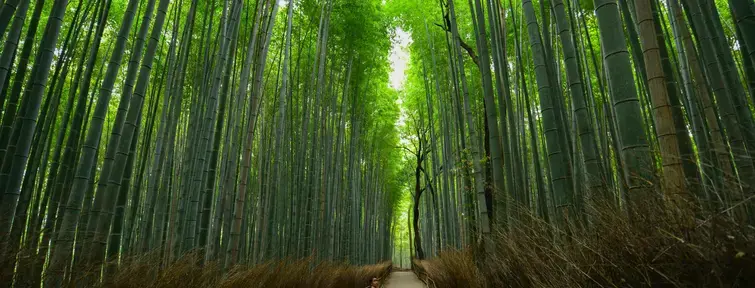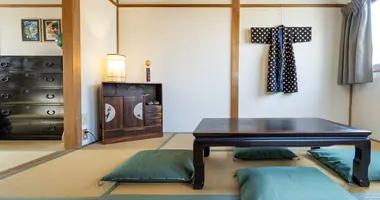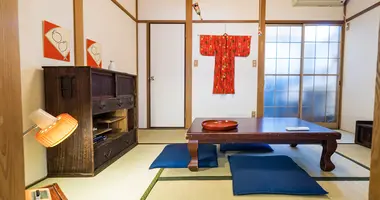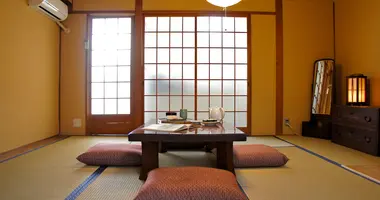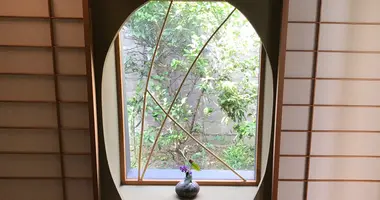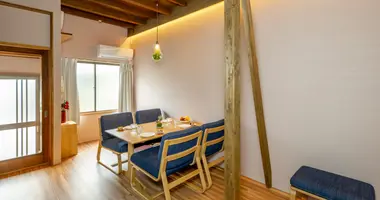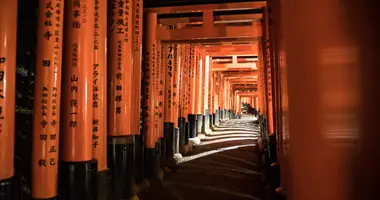Arashiyama bamboo grove: a magical experience in the heart of Kyoto
- Published on : 12/06/2024
- by : Antoine Legastelois / J.R.
- Youtube
Nestled northwest of Kyoto, the Arashiyama bamboo grove offers a unique experience to visitors from all over the world. Known as the Sagano Bamboo Forest, this emblematic site has become a must-see in the imperial city. With its giant bamboo stalks rising dozens of meters, this intensely green forest creates an almost magical atmosphere. The sun's rays filtering through the dense foliage and the rustling of the bamboos in the breeze create a soothing, zen-like atmosphere. The Arashiyama bamboo grove perfectly embodies the harmony between nature and culture so dear to Japanese aesthetics.
Introducing Sagano Bamboo Forest
Arashiyama Bamboo Grove, also known as Sagano Bamboo Forest (sagano chikurin), is located along the Katsura River, not far from the famous Togetsukyo Bridge. This forest of giant bamboos stretches for around 500 metres, making for a short but memorable walk. The bamboos reach dizzying heights, creating a unique and photogenic landscape.
This historic site was once frequented by Japanese nobility during the Heian period. Today, the bamboo grove has become a symbol of Kyoto, along with the torii of the Fushimi Inari and the Kiyomizu Dera temple. For the Japanese, bamboo represents strength and prosperity, which explains the cultural importance of this place.
How to get to the Arashiyama bamboo grove
Visitors have several options for getting to the Arashiyama bamboo grove. From downtown Kyoto, the most pleasant way is to take the charming Randen streetcar from Omiya station (one way costs 220 yen). For those who prefer the train, the Sagano and San-In lines lead to Saga Arashiyama station. The Hankyu line is another option, with a stop at Hankyu Arashiyama station.
Bus enthusiasts can take lines 11, 28 and 93, which stop at Arashiyama Tenryuju-mae. To make getting around Kyoto and the Kansai region easier, consider buying a Pasmo travel card. Don't forget to consult Kyoto public transport fares to plan your budget.
What to see and do in the bamboo grove
A walk through the bamboo grove is a unique sensory experience. Visitors are invited to follow the winding paths through the heart of this dense forest. The atmosphere is restful and almost magical, with the sun's rays filtering through the bamboo stalks. When the wind blows, you can hear the rustling and creaking of the bamboo, creating a truly special atmosphere.
Although the walk is short, it offers plenty of opportunities for memorable photos. It' s possible to explore the bamboo grove on foot, by bike, or even by rickshaw for a more traditional experience. For those seeking a more in-depth experience, some guides offer explanatory tours on the history and cultural significance of the bamboo grove.
Best times to visit and practical tips
The Arashiyama bamboo grove is open 24 hours a day and admission is free. However, due to its popularity, it can quickly become overrun with visitors. To take full advantage of the forest's serene atmosphere, it's best to get there very early in the morning, from dawn onwards. Not only will you avoid the crowds, but you'll also be able to enjoy the soft morning light filtering through the bamboo.
Each season offers a different experience in the bamboo grove. In spring, young bamboo shoots add a touch of freshness. In summer, the dense canopy offers a cool refuge. Autumn brings a special luminosity, while winter can offer spectacular views if the snow settles on the bamboo. Remember to bring good walking shoes, as the ground can be uneven in places.
Attractions and sites to discover around the bamboo grove
A visit to the bamboo grove can easily be incorporated into a day's exploration of Arashiyama. Right next door is Tenryu-ji temple, a UNESCO World Heritage Site renowned for its magnificent gardens. After a stroll through the bamboo grove, don't miss nearby Kameyama Park, which offers beautiful views of the Katsura River, particularly spectacular during the autumn leaf season.
For a unique experience, take the Sagano Romantic Train for a panoramic ride along the valley.
Don't forget to visit the Iwatayama Monkey Park, which offers not only the chance to observe Japanese macaques, but also a breathtaking view of Kyoto.
For more ideas, see our guide to 7 excursions from Kyoto.
The cultural and symbolic importance of bamboo in Japan
In Japan, bamboo occupies an important place in traditional culture and symbolism. It is considered a symbol of strength, flexibility and prosperity. In Zen philosophy, bamboo represents the fullness of nothingness, as it grows around emptiness, which is seen as the subtle center of spiritual development.
Bamboo is omnipresent in everyday Japanese life, from handicrafts to architecture and cuisine. In the tea ceremony, bamboo utensils are used, symbolizing simplicity and harmony with nature. Japanese artists, especially calligraphers and painters, often draw inspiration from bamboo for its grace and strength. This versatile plant embodies the balance between tradition and modernity so characteristic of Japanese culture.
Preserving the bamboo grove in the face of mass tourism
The growing popularity of the Arashiyama bamboo grove poses challenges in terms of preservation. The massive influx of visitors can have an impact on the forest's fragile environment. Measures have been put in place to protect this unique site, such as limiting the areas accessible to visitors and raising awareness of the importance of staying on the marked paths.
Local authorities and conservation organizations work together to strike a balance between welcoming visitors and preserving this natural heritage. Sustainable tourism initiatives are encouraged, such as promoting off-peak visitation and educating visitors about the ecological and cultural importance of the bamboo grove. As a visitor, you can contribute to these efforts by respecting the site rules and behaving responsibly during your visit.
Address, timetable & access
Address
Phone
+81(0)75881 1235 (Tenryuji)Timetable
Open 24 hours a dayPrice
Free accessAccess
Ten-minute walk from Arashiyama station (Randen line),
two minutes' walk from Torokko Arashiyama station (Sagano line),
15-minute walk from Saga Arashiyama station (San-in line).
Bus lines 11, 28 and 93 from Kyoto.
